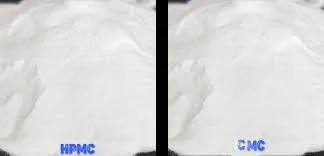
ஆக . 11, 2024 20:34 Back to list
Exploring Varieties of Redispersible Polymer Powders and Their Applications in Construction and Coatings
Understanding the Types of Redispersible Polymer Powders
Redispersible polymer powders (RDPs) are a crucial component in various industries, including construction, coatings, and adhesives. These powders are derived from polymer emulsions and are designed to be redispersed in water, offering unique properties to enhance the performance of construction materials and other applications. This article will explore the different types of redispersible polymer powders and their specific characteristics.
What are Redispersible Polymer Powders?
Redispersible polymer powders are fine, dry powders that can be re-dissolved in water to form a stable polymer dispersion. They are primarily used as additives to improve the properties of cement-based materials, such as mortars, plaster, and tile adhesives. When mixed with water, these powders create a film or matrix that contributes to the improved adhesion, flexibility, and water resistance of the final product.
Types of Redispersible Polymer Powders
1. Vinyl Acetate-Ethylene (VAE) Copolymer Powders VAE powders are one of the most commonly used types of RDPs. They are known for their excellent adhesion properties and flexibility. VAE copolymers provide a good balance of mechanical strength and elasticity, making them suitable for a wide range of applications. Their resistance to water and weathering makes them ideal for exterior applications, such as facades and roofing materials.
redispersible polymer powder types

2. Acrylic Copolymer Powders Acrylic RDPs are recognized for their outstanding weather resistance and UV stability. These powders are often used in applications that require durability against harsh environmental conditions. Acrylic copolymer powders offer excellent color retention and maintain their properties over time, making them a preferred choice for paints, coatings, and decorative finishes.
3. Styrene-Acrylic (SA) Copolymer Powders SA copolymer powders combine the benefits of styrene and acrylic, offering enhanced mechanical properties and improved adhesion. These powders are suitable for use in various construction applications, particularly where improved toughness and durability are needed. They often find their place in repair mortars and tile adhesives, where superior performance is essential.
4. Ethylene-Vinyl Chloride (EVC) Copolymer Powders EVC powders exhibit excellent thermal and chemical resistance. These properties make them suitable for applications in harsh environments, such as industrial floorings or exterior coatings. Their compatibility with other resins allows for versatile formulations, enhancing overall performance.
5. Polyvinyl Acetate (PVA) Powders Although less common than other types, PVA powders are notable for their strong adhesion properties and good film formation. They are often utilized in adhesives and lightweight mortars. PVA-based RDPs are particularly effective in applications that demand strong bonding capabilities.
Conclusion
Redispersible polymer powders play an essential role in enhancing the properties of construction materials and other products. Understanding the various types of RDPs—such as VAE, acrylic, SA, EVC, and PVA—can help manufacturers select the right additive for their specific applications. Each type of polymer powder brings unique characteristics that can significantly improve the performance, durability, and aesthetic qualities of the final product. As technology advances, the development of new and improved RDPs will continue to contribute to innovation in various industries, meeting the evolving needs of consumers and professionals alike.
-
Unlocking the Benefits of HPMC Products: A Gateway to Versatile Applications
NewsAug.07,2025
-
Tile Bonding Cellulose: The Key to Superior Adhesion and Durability
NewsAug.07,2025
-
Hydroxypropyl Methylcellulose Powder: The Versatile Component in Modern Pharmaceuticals
NewsAug.07,2025
-
Hydroxyethyl Cellulose: The Versatile Solution for Various Industries
NewsAug.07,2025
-
Hydroxyethyl Cellulose (HEC): The Versatile Polymer for Various Applications
NewsAug.07,2025
-
The Ultimate Guide to Mortar Bonding Agent
NewsAug.06,2025







